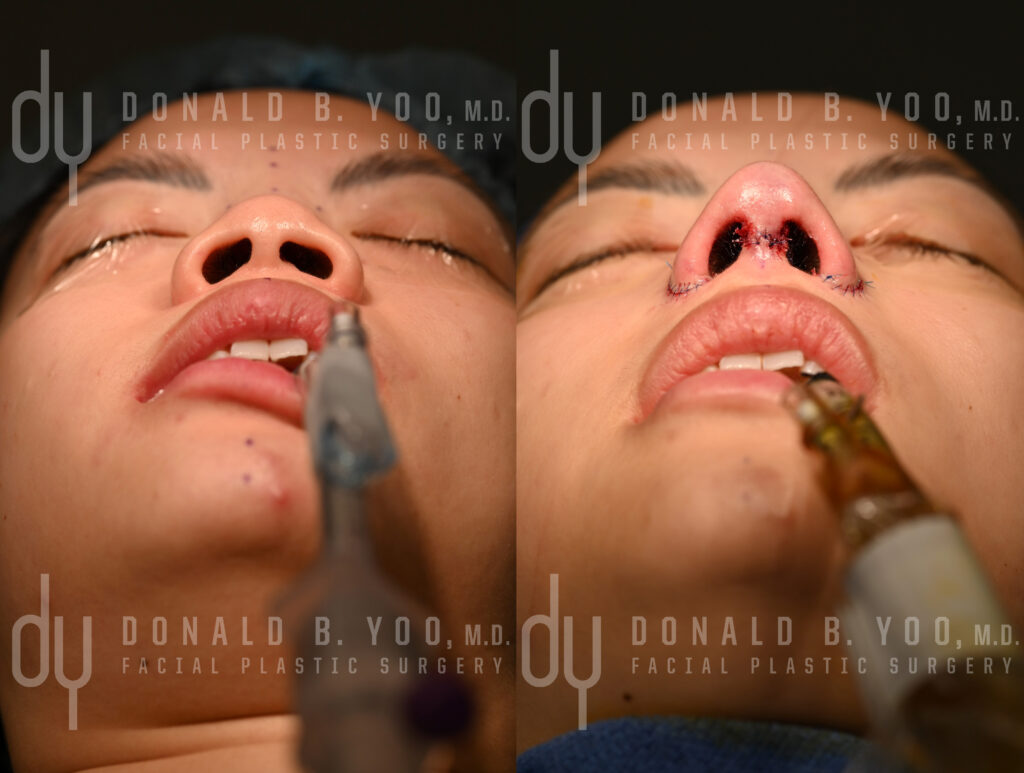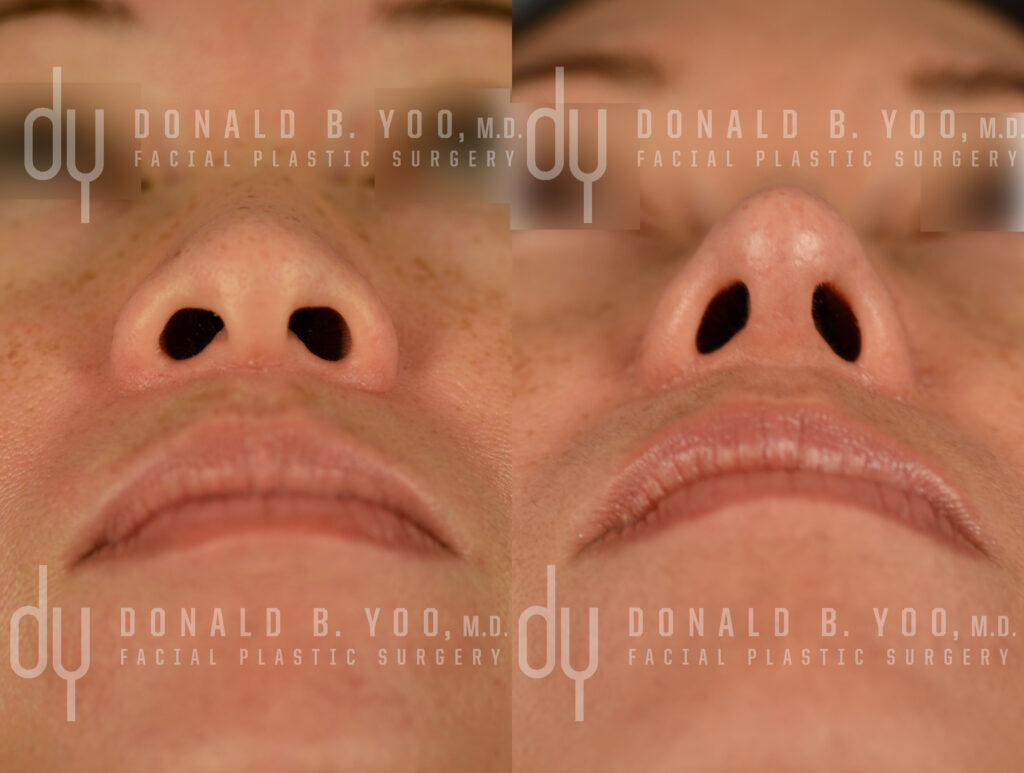Asian rhinoplasty refers to a specialized subset of rhinoplasty surgery used to reshape the nose to enhance the natural beauty in Asian patients. Experts in this focused surgery will have the ability to not only create projection, augmentation and definition to the nose, but to optimize the overall balance of the nose to complement the entire face.
One area that gets frequently overlooked during Asian nose job surgery remains the ala, alar rims and nostrils. Important considerations to determine the best way to comprehensively address the nostrils and alar include evaluation of the patient-specific anatomy as it relates to facial shape and proportions, but perhaps more importantly the patient-specific aesthetic goals. Every patient wants the nostrils and ala to look natural, and not a single patient wants them to look “pinched”, with Michael Jackson’s nose often pointed to as the kind of result that makes patients afraid of alar base reduction, or even rhinoplasty itself more broadly. A well-designed and executed alarplasty will leave no traces of surgery, while a poorly performed one will make it obvious something was done.

The attachment of the ala to the cheeks is referred to as the alar base, and determines the width of the nostrils. As a general guideline, the distance between the eyes (intercanthal distance) should closely approximate the width of the nostrils, assuming a normal distance between the eyes. When evaluating the cause of the width, attention should be directed at the size of the alar base as well as the width of the nasal sill. The level of flaring of the alar rim and nostril will determine the appropriate design of the alarplasty incision, incorporating the alar base alone (Weir incision), the nasal sill alone, or a combination of both. Some rhinoplasty surgeons mistakenly design the incision above the alar-facial groove instead of within the groove in a misguided attempt to preserve this natural crease, fearing that incisions designed within the crease will blunt it. In fact, with proper closure of the incision the resultant scar will hide within the preserved crease, becoming almost invisible once fully healed. Incisions designed above the alar-facial groove, on the other hand, will leave a scar that will always remain visible.
In addition to the width of the nostrils, the shape and degree of flare of the alar rims determine the overall appearance of the lower third of the nose when viewed from the front. When excess flare is present, the surgeon must carefully assess the contribution of the skin and lower lateral cartilages as well. In patients with thin skin and neutral to concave lower lateral cartilages, alarplasty alone will be extremely effective at reducing the width and flare of the nostrils in a manner that results in a natural and refined appearance. However, in patients with thick skin and convex lower lateral cartilage alarplasty alone without rhinoplasty may result in the tip of the nose and infratip appearing bulbous and even wider than before surgery.

 Contact Us
Contact Us